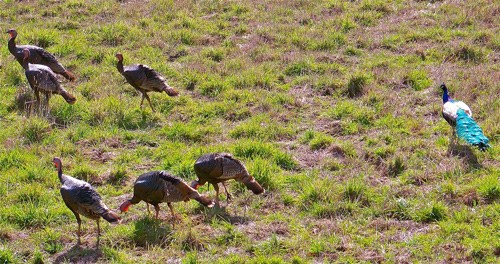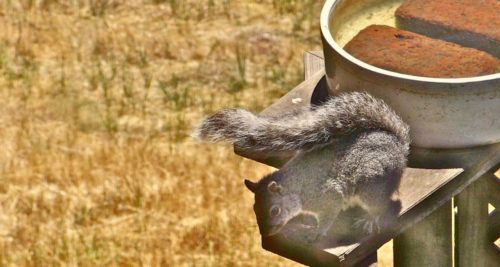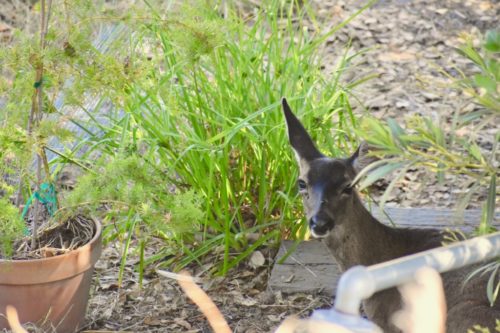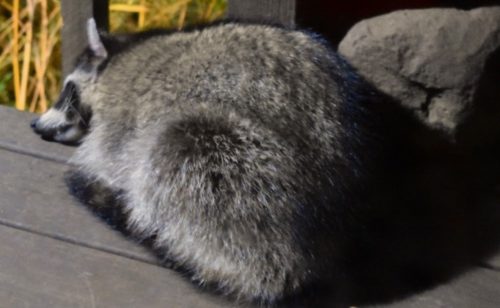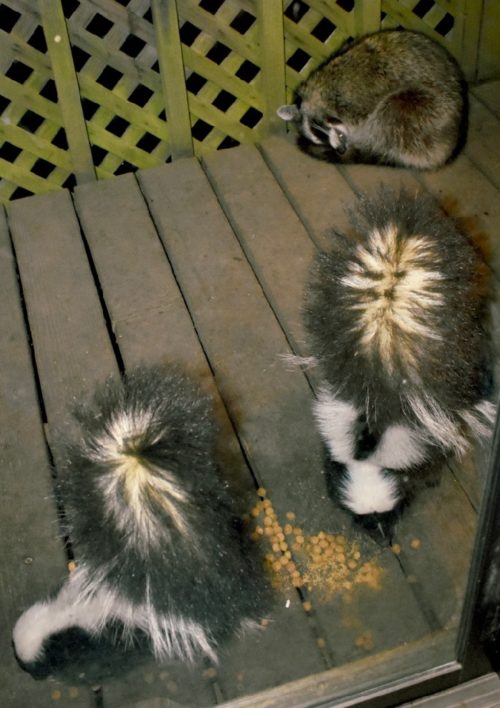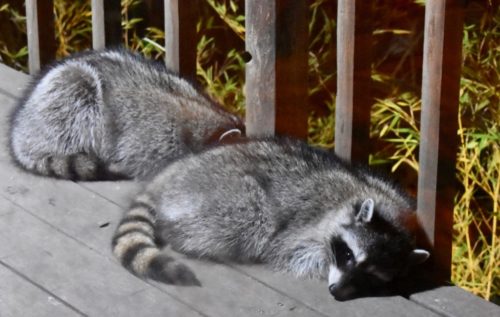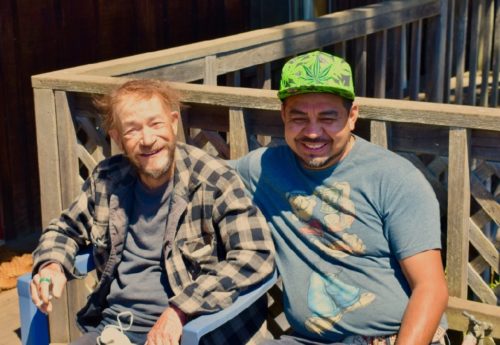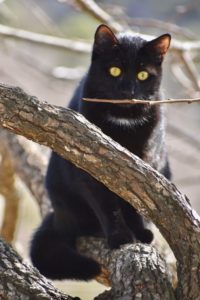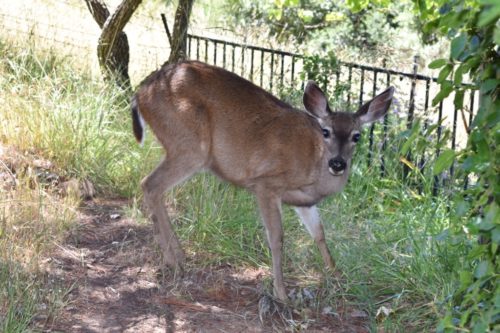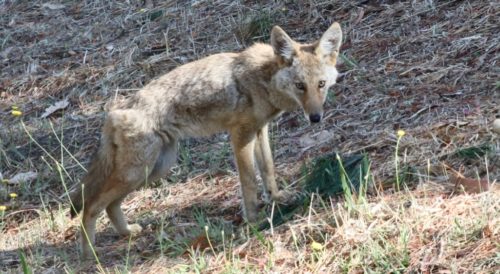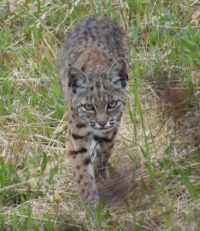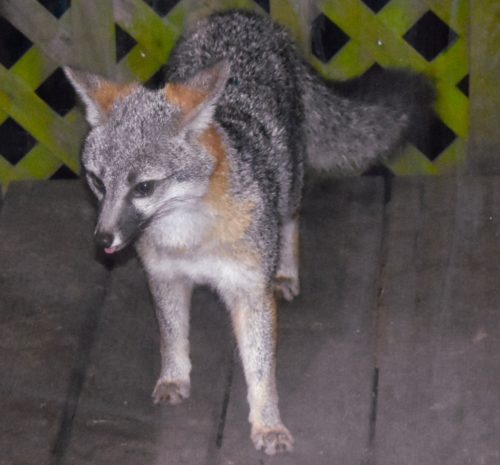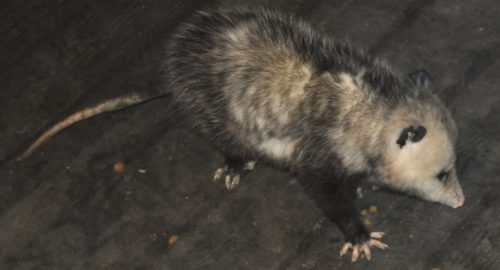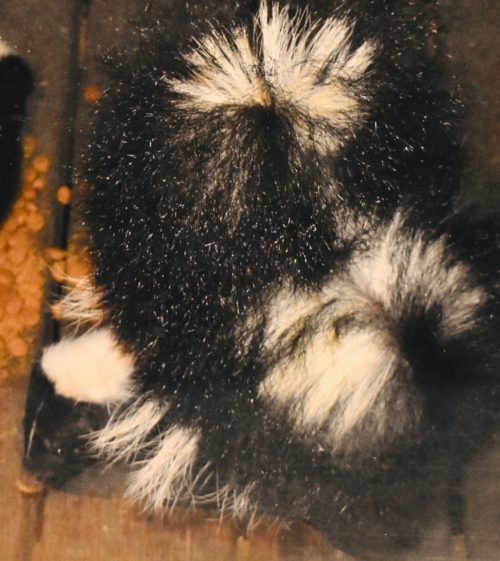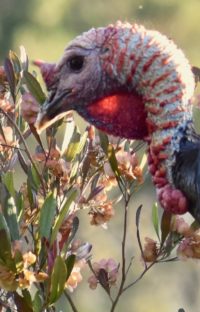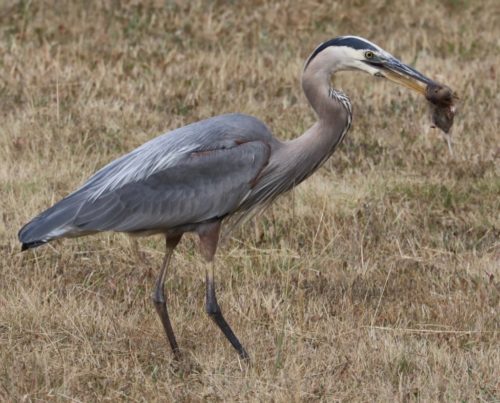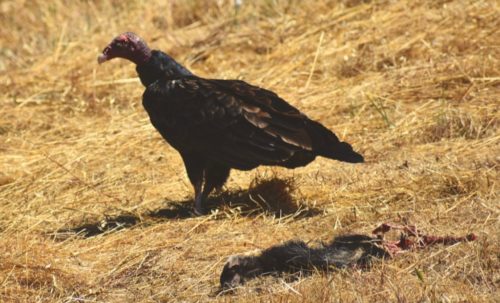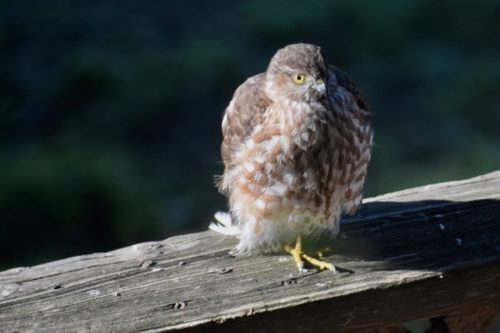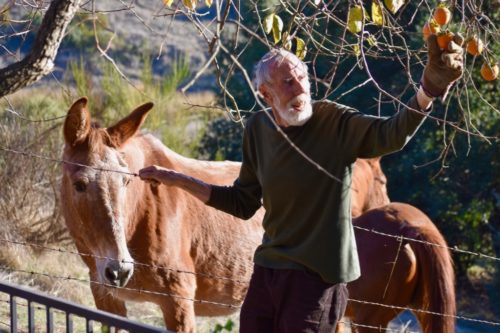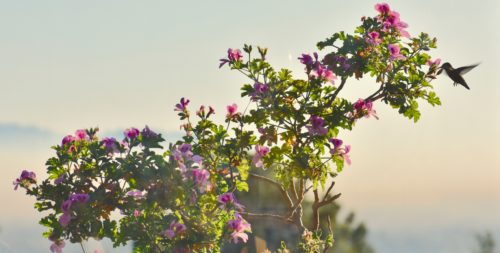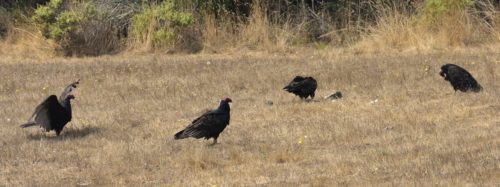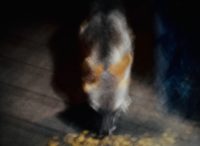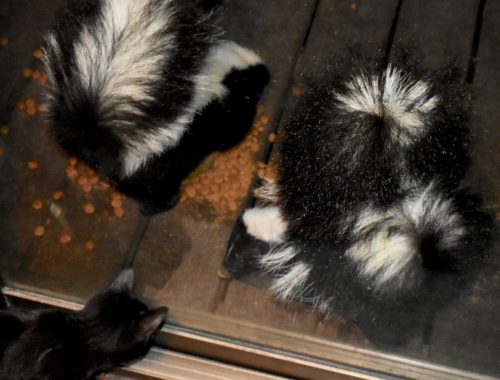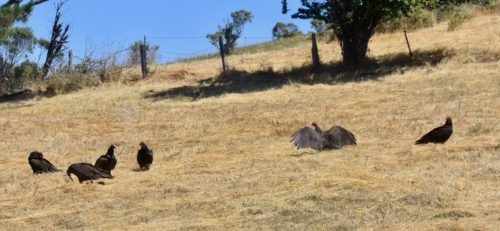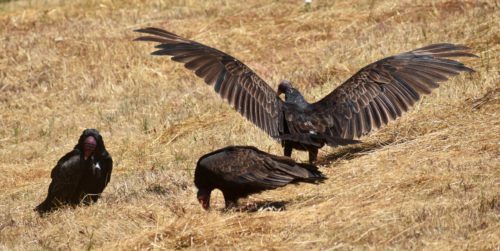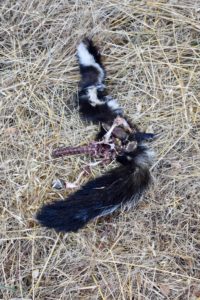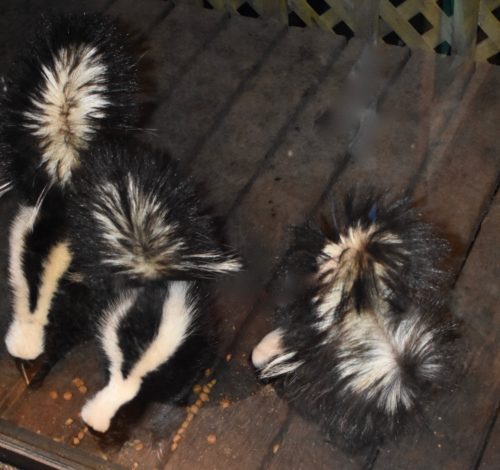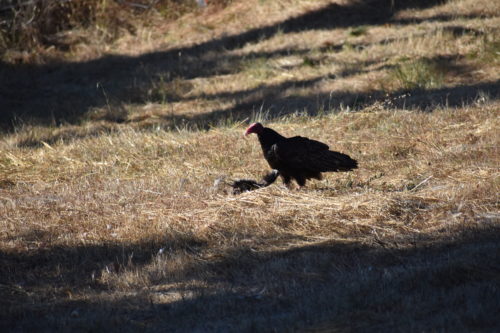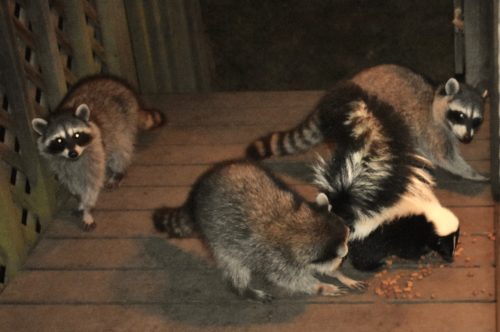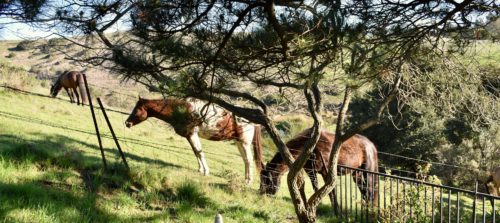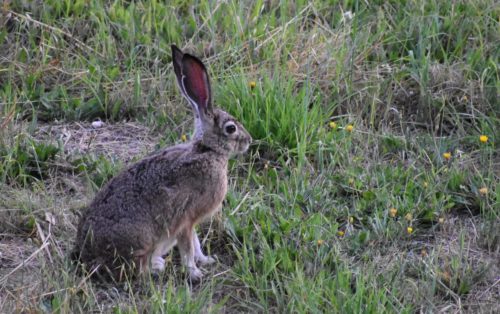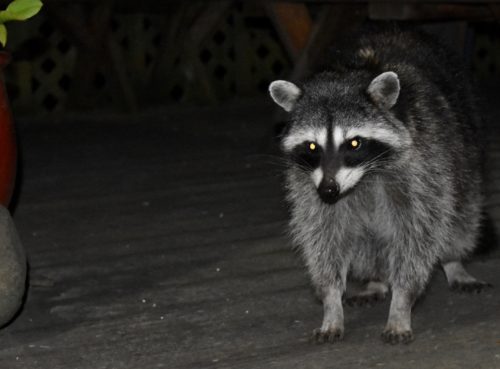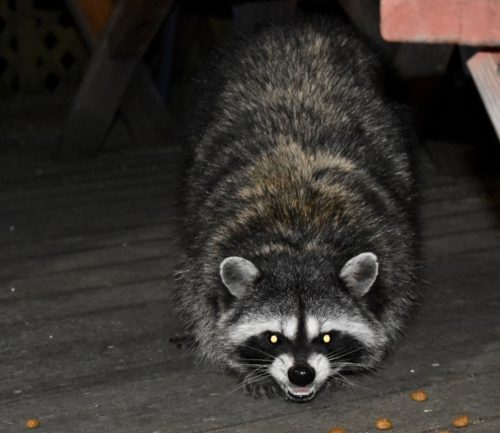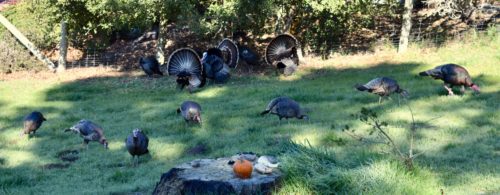Entries tagged with “skunks”.
Did you find what you wanted?
Mon 18 Jul 2022
Posted by DavidMitchell under History, Point Reyes Station, The Point Reyes Light Newspaper, West Marin nature, Wildlife
Comments Off on Encountering the unexpected
Caveat lectorem: When readers submit comments, they are asked if they want to receive an email alert with a link to new postings on this blog. A number of people have said they do. Thank you. The link is created the moment a posting goes online. Readers who find their way here through that link can see an updated version by simply clicking on the headline above the posting.
The past few days have been filled with unexpected events. Here are a few.

On Saturday evening, urban crime drove to Point Reyes Station. To quote West Marin Feed: “Apparently a truck was stolen in SF, pulled over in San Anselmo, then led CHP on a chase through West Marin. The front tire was blown out. [The thief] circled around Point Reyes Station a couple of times, ditched truck [near the gas station], tried to run and [was] arrested.”
Photo from a video by Marc Matheson
Update as of July 22: The Point Reyes Light has now reported the truck is owned by Cathy Schoop of Fairfax. When it was stolen, one of her employees followed it to the Red Hill Shopping Center in San Anselmo and summoned the Highway Patrol as well as Ms. Schoop. The Light reported that Ms. Schoop “just bought the 2022 Isuzu for her business, Annie’s Hot Dogs, which operates several food carts in San Francisco. A coffee cart, an ice cream cart and the day’s cash were in the back when it was stolen, she said. [All this was] worth about $40,000 in total.”
Ms Shoop told The Light, “she pleaded with officers to seize the empty truck, but because they couldn’t confirm it was stolen, they waited until the driver returned and sped away from the parking lot, headed toward West Marin. They could have gotten my truck back undamaged.” Instead of doing that, she told the newspaper, the officers asked her, “How do we know it’s really your truck?” To this she added, “They completely screwed me over with their lackadaisical attitude.”
One way the truck was damaged was in being driven around Point Reyes Station after losing its right front tire (see photo) and riding on the rim until it ran off the road. Scrapes from that episode are still evident on several streets in town.
The driver, a construction worker, Dylan Kane Wilson, 21, was charged with two vehicle-theft felonies and two misdemeanors — for evading a police officer and driving without a license. In addition, he faces outstanding warrants for a probation violation, failure to appear in court, and two drug misdemeanors, The Light reported.

A skunk that got away. Sunday morning my drive into Point Reyes Station was unpleasantly smelly. Downhill from West Marin School I spotted the problem. Across Highway 1 from the “Maddy’s Jammin'” sign, I passed a large dead skunk lying at the edge of the pavement. The better part of the day passed before someone moved it to a roadside ditch where it continued to stink.
These days, Marin Humane Society (415 883-4621, ext. 1) picks up dead skunks for $75. Back in the 1970s, county government paid a man with a pickup truck to gather the corpses of skunks, most killed by motor vehicles.
As editor and publisher of The Point Reyes Light in those days, one of my responsibilities was to deliver bundles of papers to stores as soon as copies arrived from the printer. One day, I was dropping off a bundle at the Olema Store when the skunk gatherer parked his truck out front and went inside, leaving a number of roadkill in the pickup bed. Unfortunately, their stench immediately started drifting into the market, and the grocer had to somewhat awkwardly ask the skunk gatherer to park elsewhere.

Death of an old horse. A 33-year-old horse belonging to the Point Reyes Arabian Adventures stable along Highway 1 died of a heart attack Sunday afternoon. Thirty-three horse years are equivalent to 93 human years, and it had enjoyed a good life.
The Arabian Adventures pasture stretches to within 25 feet of Mitchell cabin, and my wife Lynn soon noticed the dead animal lying on the ground and covered with blankets.
The deceased, which was named Chainsaw, had a brother in the stable’s herd, and they frequently hung out together (note the two black horses at left). Owner Susie Rowsell later told me she had seen the two running up the hill together and Chainsaw collapse when they stopped. His sibling was obviously disturbed, she noted.
 Four raccoon kits dining on handfuls of kibble outside our kitchen door. These raccoons are becoming surprisingly at home at Mitchell cabin. Not only do they show up for kibble, they often head for our birdbath, from which they drink and in which they bathe. They take naps on our deck and hide quietly behind our wine barrel planters when a friend’s dog shows up.
Four raccoon kits dining on handfuls of kibble outside our kitchen door. These raccoons are becoming surprisingly at home at Mitchell cabin. Not only do they show up for kibble, they often head for our birdbath, from which they drink and in which they bathe. They take naps on our deck and hide quietly behind our wine barrel planters when a friend’s dog shows up.
Wed 16 Jun 2021
Posted by DavidMitchell under Uncategorized
Comments Off on Wild times continued during the lockdown
Caveat lectorem: When readers submit comments, they are asked if they want to receive an email alert with a link to new postings on this blog. A number of people have said they do. Thank you. The link is created the moment a posting goes online. Readers who find their way here through that link can see an updated version by simply clicking on the headline above the posting.
My wife Lynn dealt with the tedium of the shelter-in-place lockdown in part by watching British murder mysteries in the evening. I myself seldom watch TV and instead endured the lockdown by watching the wildlife around Mitchell cabin. Here’s what I’ve been seeing.

A raccoon and a gray fox got together for an ecumenical dinner outside our kitchen door Monday night. Raccoons can be aggressive when other raccoons try to horn in on their kibble snacks, but foxes and skunks get a free pass.

Wild turkeys are regular visitors to our fields, often accompanied by a lonely peacock whose screams sound like a woman crying out for help.

A stinky trio, three skunks march around the field above Mitchell cabin in tight formation.

Jackrabbits are showing up more as summer approaches.

A squirrel stops by our birdbath for a drink.

A roof rat and towhee have an ecumenical dinner of their own, quietly snacking on birdseed atop our picnic table.

The local bobcat walked downhill toward Lynn Monday while she was transplanting nasturtiums in our garden. When the bobcat saw her, it didn’t abruptly flee but merely trotted off into a neighboring field. My homeless friend, Billy Hobbs, tells of having an unconcerned bobcat walk quite close to him while he was sleeping along Papermill Creek near the Green Bridge. “I’ll bet it’s the same one,” he said Tuesday when I told him of Lynn’s encounter. (For the moment, Billy is being housed in Motel 6 at county expense.)

Other predators that keep us company are coyotes who howl for our entertainment more nights than not.
During the pandemic lockdown, enough people were staying at home that coyotes began more freely wandering about in nearby San Francisco, with experts estimating there are 40 to 70 of them.
Thu 27 May 2021
Posted by DavidMitchell under Uncategorized
Comments Off on The question is: where to sleep?
Caveat lectorem: When readers submit comments, they are asked if they want to receive an email alert with a link to new postings on this blog. A number of people have said they do. Thank you. The link is created the moment a posting goes online. Readers who find their way here through that link can see an updated version by simply clicking on the headline above the posting.
__________________________
This week we’ll take a look at who’s been sleeping around Mitchell cabin besides Lynn, me, and our previously stray cat Newy. These days it’s not just a matter of sheltering in place but also of finding shelter.

A tranquil doe. My wife Lynn found this blacktail deer sleeping on our front steps Tuesday morning. (Photo by Lynn Axelrod Mitchell)

Snoozing raccoon. Early Tuesday evening I was surprised to find this raccoon sleeping on our deck quite close to our front door.

Sleeping place invaded. A short while later, another raccoon began snoozing a few feet from our kitchen door only to have two skunks show up to finish off the handfuls of kibble I’d given the raccoon. It appeared to pay only drowsy attention to the skunks and stayed put.

Two raccoons asleep on our front deck still later Tuesday evening. Mitchell cabin has obviously become a secure enough retreat that a variety of wildlife nap here.

Billy Hobbs (left). Aside from his hair on a windy day, Billy is not exactly wild, but he has been homeless for more than seven years since the breakup of a 25-year marriage.
When I first met Billy, an artist, he was living on the street in Point Reyes Station. After the weather got bad in the winter of 2019-20, Lynn and I offered to let him stay in our basement. Last year I let him sleep in my second car, which I parked on Mesa Road downtown, moving it every 72 hours to comply with the law.
At present, Billy, 63, is being sheltered at Motel 6 in San Rafael, with county government picking up the tab. Wednesday afternoon, his friend Gaspar drove Billy out to Point Reyes Station so he could visit his onetime hangouts. Thank God, Billy at least for the moment has a secure place to sleep. Society too often treats the homeless as if they were all wild animals.
Fri 19 Feb 2021
Posted by DavidMitchell under Uncategorized
Comments Off on Looking animals in the eye
This week we’ll look animals, both domestic and wild, in the eye to get a sense of what they see.

Newy, the stray cat we’ve taken in and who has been mentioned here before, can have an intense gaze when she’s looking off at something. It’s noticeable enough that it prompted me to look into, so to speak, the eyes of not only cats but other animals as well. A cat’s vision is not as all-powerful as it appears. A cat is most sensitive to blues and yellows and does not see colors like red, orange, or brown.

A blacktail doe looks up from grazing outside our bedroom window. The pupils in a deer’s eyes are horizontal, not round, and a flash camera makes them look blue.

A coyote displays his predatory nature as he stares into a field. As it happens, just now as I type this, coyotes are howling outside Mitchell cabin. (Photo by neighbor Dan Huntsman)

The no-nonsense look of a bobcat in the field below Mitchell cabin.

Foxes too are predatory, but their gaze makes them appear more curious than vicious.

Possums have good night vision but don’t distinguish between colors very well. Overall, their vision is so weak they must depend on smell and touch to find food.

Skunks, like possums, have very poor vision and navigate largely via their senses of smell and hearing.

Wild turkeys, on the other hand, see in color and “have an excellent daytime vision that is three times better than a human’s eyesight and covers 270 degrees,” according to ‘Facts about Wild Turkeys.’ “They have poor vision at night, however, and generally become warier as it grows darker.”

‘Livingbird Magazine’ reports that “Great Blue Herons can hunt day and night thanks to a high percentage of rod-type photoreceptors in their eyes that improve their night vision.” Near Mitchell cabin, a gopher with the baleful stare of death hangs from the heron’s beak.

Buzzards have such “keen eyesight,” Seaworld claims, that “it is believed they are able to spot a three-foot carcass from four miles away on the open plains.”

A stern stare. Coopers Hawks are skillful hunters and like other hawks have excellent vision.

The smirk of a Western Fence Lizard (also known as a Blue Belly for obvious reasons). It’s one of the most common lizards around Mitchell cabin. As for their vision, most lizards have excellent eyesight, and some can see into the UV spectrum.

Somehow my work glove hand ended up on the persimmon, and my bare hand on the barbed-wire fence. (Photo by Lynn Axelrod Mitchell)
This moment became a test of my vision and not in looking at the persimmons growing between the fields of Mitchell cabin and Arabian Horse Adventures. After some staring, I concluded that the Arabian waiting patiently for a persimmon is, in fact, a female mule. Nonetheless, I eventually gave her some fruit. Later I found out the mule had arrived in the pasture not long ago after its owner died. So far I’ve never seen any of the stable’s trail riders on it. Arabian Mule Adventures.
Tags: animal eyesight, blacktail deer, blue belly, buzzards, Cooper's hawk, foxes, Great blue heron, jackrabbit, mule, possum, skunks, Western fence lizard
Mon 21 Sep 2020
Posted by DavidMitchell under Point Reyes National Seashore, West Marin nature, Wildlife
Comments Off on Home sometimes seems like an animal shelter
Caveat lectorem: When readers submit comments, they are asked if they want to receive an email alert with a link to new postings on this blog. A number of people have said they do. Thank you. The link is created the moment a posting goes online. Readers who find their way here through that link can see an updated version by simply clicking on the headline above the posting. All other readers already have an updated version.
Sheltering in place with only limited socializing definitely affects one’s thinking. It forces many of us to spend more time alone taking stock of ourselves and of our lives. It’s a humbling experience and may provide an inkling of why a prisoner behind bars cannot avoid thinking about his life. But, as I’m sure the prisoner knows, too much such thinking becomes tedious. For the moment, I’m trying to divert my attention to the creatures I find all around me.

A hummingbird a week ago enjoyed a few sips before the smoke from the Woodward Fire significantly dissipated. As of this writing, the fire, which a lightning strike started on Aug. 18, was 97 percent contained, having blackened 4,929 acres in the Point Reyes National Seashore.

A coyote wandered up to the greenhouse of neighbors Dan and Mary Huntsman on August 21. Had I been looking out my living-room window, this is what I would have seen. Alas, I wasn’t looking, but Dan was and from his home took this picture. (Photo by Dan Huntsman)

Buzzards on Sept. 13 feast on the carcass of a skunk presumably killed by a great horned owl. It was the second time in recent weeks buzzards dined on a skunk near Mitchell cabin.

A gray fox showed up on our deck after dark last week to dine on the last bits of kibble I had given some raccoons earlier.

A skunk goes eye to eye with Newy, the stray cat we adopted in late July. More frequently than the fox, skunks show up after the raccoons to pick through what remains of the kibble.
And in a weather vein: Whenever Lynn opened the bedroom window in recent days, I started sneezing and then coughing. “Do you think it’s pollen or smoke that’s causing the sneezing?” she asked me a couple of days ago. “The answer,” I told her, “is blowing in the wind.”
I’ll stop here. There’s a lot I’m tempted to write about our political situation, but I think I’ll save that for another week.
Wed 15 Jul 2020
Posted by DavidMitchell under Photography, Point Reyes Station, West Marin nature, Wildlife
Comments Off on Owls, buzzards, and other skunk eaters
Caveat lectorem: When readers submit comments, they are asked if they want to receive an email alert with a link to new postings on this blog. A number of people have said they do. Thank you. The link is created the moment a posting goes online. Readers who find their way here through that link can see an updated version by simply clicking on the headline above the posting.

Six buzzards landed on the hill above Mitchell cabin last Saturday, immediately letting Lynn and me know that something had died.

We could see one buzzard tearing away at a carcass. But of what?
(Before going further, I should acknowledge the “buzzard” v. “vulture” dispute I occasionally get into with a few readers who apparently prefer British English to American English. For them, vulture is the only correct name for the species, and buzzard means only Buteo hawk. I disagree, and my authority is The American Heritage Dictionary. It defines the word buzzard as: “1. Any of various North American vultures, such as the turkey vulture. 2. Chiefly British. A hawk of the genus Buteo, having broad wings and a broad tail. 3. An avaricious or otherwise unpleasant person.”)

Upon closer inspection (despite the stench) I could see the deceased was a skunk. My guess is that it was killed by one of the great horned owls on this hill. Because of the likelihood of getting sprayed, coyotes and foxes reluctantly hunt skunks only when no other prey is available. Great horned owls, whose weak sense of smell is limited to supplementing their sense of taste, like to hunt skunks.

A great horned owl. (Missouri Department of Conservation photo)

Female skunks typically raise four to six kittens in a season, with the males leaving the females before the young are born. Skunks were once widely hunted for their pelts, but they now have far more to worry about from motor vehicles; skunks are so near-sighted they can’t see things clearly that are more than 10 feet away.

This buzzard arrived a day late for Saturday’s feast but still found enough skunk flesh to nibble on. Buzzards are fond of dead skunks, but they leave the skunks’ scent pouches intact.

Raccoons, like dogs, identify each other by sniffing bottoms, and (as seen here before) they also sniff skunk bottoms but for some reason don’t get sprayed. Two nights ago I saw a very young kit repeatedly sniff a skunk’s rear end. The skunk didn’t like it and kept moving away, but the kit persisted in nosing around back there until the skunk finally walked away.
At least it didn’t get killed and partially eaten by an owl with most of the leftovers consumed by a flock of buzzards.
Sat 29 Feb 2020
Posted by DavidMitchell under West Marin nature, Wildlife
Comments Off on Animal tales of past developments
Caveat lectorem: When readers submit comments, they are asked if they want to receive an email alert with a link to new postings on this blog. A number of people have said they do. Thank you. The link is created the moment a posting goes online. Readers who find their way here through that link can see an updated version by simply clicking on the headline above the posting.

A coyote prowling, appropriately enough, near our coyote brush.
Coyotes were loudly howling Thursday night down at the foot of our cul de sac, creating the impression that something big was occurring. But as the Human-Wildlife Interactions journal explained in 2017, some mistakenly believe howling indicates that a group of coyotes has made a kill.
Coyotes howl for various reasons, and it is not likely because they have downed prey. Doing so would draw attention and might attract competing coyotes or other predators to their location, which is not something a hungry coyote would want to do. Coyotes howl and yip primarily to communicate with each other and establish territory. They may bark when they are defending a den or a kill. When coyotes are noisy, it often creates an exaggerated impression as to how many are on hand, largely because of the mixing of howls and yips.
There were no coyotes in West Marin for 40 years because of poisoning by sheep ranchers in northwest Marin and southern Sonoma counties. However, coyotes never disappeared from northern Sonoma County, and after the Nixon Administration banned the poison 10-80, they started spreading south and showed up here again in 1983. Since then coyotes have put an end to well over half the sheep ranching around Marshall, Tomales, Dillon Beach, and Valley Ford.

Three horses belonging to Point Reyes Arabian Adventures grazing outside our bedroom window last week.
By chance, I’ve recently listened several times to the Irish singer Van Morrison singing his 1989 composition Coney Island. It’s a pastoral song, which seems to contain an odd reference to cocaine: “Coney Island/ Coming down from Downpatrick/ Stopping off at St. John’s Point/ Out all day birdwatching/ And the crack was good.”
The reality, of course, is that he’s actually saying “craic,” which is a relatively new Irish word for fun or entertainment. It was borrowed in the last century from Ulster and Scotland, where it is pronounced crack.

Jackrabbit outside Mitchell cabin.
Coney Island in Van Morrison’s song does not refer to the amusement park in Brooklyn but to an island off County Sligo on the west coast of Ireland. And here’s where the story gets interesting. By most accounts, Dutch settlers named Ireland’s Coney Island after the many rabbits found there, konijn being a Dutch word for rabbit.
In the late 1700s, a merchant ship, Arethusa, regularly sailed between Sligo and New York City. After seeing an abundance of rabbits on a New York island, Peter O’Connor, the ship’s captain, named the place Coney Island because it reminded him of the Coney Island in Sligo Bay. During the 1920s and 1930s, Coney Island, New York, became a peninsula when a creek separating it from the rest of the city was filled in.

Raccoons are nightly visitors at Mitchell cabin, and I’ve come to see at least two sides of their personalities. They’re cute and able to beg for handouts, but they get skittish if I’m too close, quickly backing away when I open a door. And that’s probably for the best. Over the years, West Marin’s raccoons have prompted numerous calls to the Sheriff’s Office from people who thought they heard a prowler on their porch or roof at night.
Skunks drop by Mitchell cabin most nights, aggressively competing with the raccoons for food. They don’t spray but forcefully shoulder aside raccoons, even though the latter are noticeably bigger. I’m fascinated by all this and find it shameful how misguided county policy towards the two species was six decades ago. In 1958, Marin County supervisors began offering $1 bounties for skunk and raccoon tails. Fortunately after three weeks, the board reversed itself and dropped the offer, not because it was cruel but because young hunters with small-bore rifles were shattering too many windows.

Despite appearances, this raccoon is not trying to look fierce. It’s merely chomping down hard on a piece of kibble.
If raccoons show up on our deck wanting to be fed and realize we don’t know they’re out there, some will make us see them through our living room windows by standing on their hind legs atop a small bench or the woodbox and staring in at us. If we still don’t see them, they often create a squeal by dragging the pads of their front paws down the glass.

Wild turkeys are native to Canada, Mexico, the American Midwest, and the East Coast but not West Marin although they are now found throughout this area. In the 1950s, the state Department of Fish and Game released some wild turkeys in Napa County because they were so popular with hunters. In 1988, Fish and Game biologists took a few birds from the Napa flock and released them on Loma Alta Ridge between Big Rock and Woodacre.
Few people hunt the turkeys these days, flocks have increased in number and size, and the turkeys have become rather bold. In 2001, two Tom turkeys went after a couple of school children riding scooters in Tomales. The children had to escape on foot, leaving their scooters behind. Now who’s doing the hunting?
Sun 25 Aug 2013
Posted by DavidMitchell under West Marin nature, Wildlife
Comments Off on A visit from Pepé Le Pew
Skunks are crepuscular, which means they hunt at twilight and daybreak, and last Wednesday as the sun was going down, a lone skunk showed up just outside Mitchell cabin. Except during the mating season, skunks are solitary critters, so its being alone was no surprise. The surprise was seeing one at all. It had been years since a skunk had been out in the open around the cabin, and it was sort of a treat to see one despite skunks’ stinking reputation.
It’s not unusual to smell a skunk hereabouts, of course; this is the countryside. And occasionally I’ll spot a dead skunk on Highway 1. Skunks have terrible eyesight and can see only about 10 feet, which is why they are so vulnerable on roadways.

A skunk on the hunt.
Skunks are omnivorous. They eat plants, grasses, and berries at this time of year, as well as insects, earthworms, salamanders, frogs, lizards, carrion, and birds’ eggs whenever they can find them.
They are a major predator of honeybees because their thick fur protects them from stings when they attack hives to eat bees, not honey.

This skunk seemed to be looking for small rodents, such as moles or voles, and periodically dug furiously in various holes it came across. The creature’s strong, short legs and long front claws are ideal for burrowing.
Skunks mate in the early spring and their young are born about two months later. Blind and deaf when first born, kits open their eyes after three weeks and are weaned in about two months. The kits stay with their mother for about a year, which is a long time for a skunk. Their typical lifespan in the wild is only three to six years.

At times the skunk was almost vertical as it dug into the ground. It couldn’t see me when it was in this position, but I wasn’t about to pull its tail.
Skunks produce their foul-smelling fluid in anal scent glands to drive off predators, of course, and they can spray it up to 10 feet with accuracy.
Skunks are sparing with their spray, however, for they have only enough for about half a dozen blasts, and it takes roughly 10 days to rebuild their supply. So rather than relying on repeated spraying to drive off predators, they count on their distinctive black and white coloring to act as a warning. Nonetheless, if a skunk raises its tail, stamps its feet, and hisses, back off quickly, for it is about to spray.
Point Reyes Station naturalist Jules Evens writes in The Natural History of the Point Reyes Peninsula that skunks are sometimes eaten by mountain lions. I wonder how cougars avoid being sprayed. Great horned owls also eat skunks, but that’s easier to understand since the owls have a very poor sense of smell.

Skunk meandering at sunset.
So what do you do if you, your dog, or your cat gets sprayed? Despite the old wives’ tale, tomato juice will not eliminate the smell. It merely cloaks it slightly. Humans and pets both need thorough baths to get rid of the stench.
Bathing dogs is not always easy, and bathing cats can be comparable to the battle for Damascus. Moreover, you probably will need special pet shampoos and soaps, which are usually available only from veterinarians.

It is common for skunks to dig holes in backyards and lawns, much to the annoyance of some homeowners.
In the mid-1990s, the Marin Major Crimes Taskforce raided a marijuana patch on the south side of the Point Reyes-Petaluma Road about a mile east of Highway 1. Pot is reputed to have a skunk-like smell, and soon after the raid, I began noticing a skunky smell whenever I drove through the area. Evidently there was a second patch somewhere in the vicinity.
Almost two weeks went by before I spotted a dead skunk in a ditch beside the road and figured out where the smell was coming from. It made me wonder how often cops prepare for pot raids but find only dead skunks.

In the Deep South, skunks are often referred to as polecats while in Latin America they are called zorrillos (meaning little foxes).
Skunks have suffered from bad press for centuries. Even Charles Darwin dismissed skunks as “odious animals” in The Voyage of the Beagle published in 1839. However, when Looney Tunes in 1945 debuted a Parisian skunk named Pepé Le Pew, the creature’s reputation began to evolve from stinky to comic. Click here for a bit of post-war nostalgia.

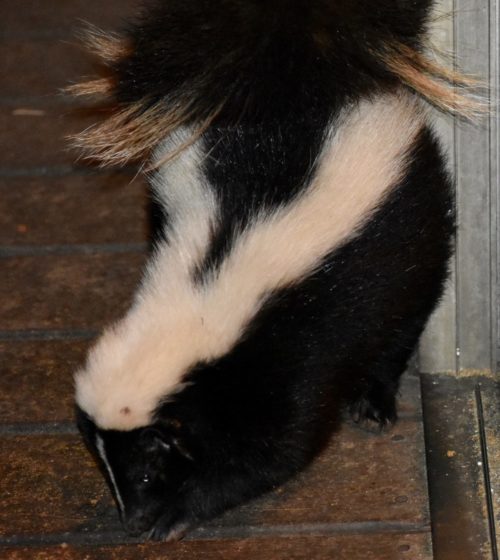

 Four raccoon kits dining on handfuls of kibble outside our kitchen door. These raccoons are becoming surprisingly at home at Mitchell cabin. Not only do they show up for kibble, they often head for our birdbath, from which they drink and in which they bathe. They take naps on our deck and hide quietly behind our wine barrel planters when a friend’s dog shows up.
Four raccoon kits dining on handfuls of kibble outside our kitchen door. These raccoons are becoming surprisingly at home at Mitchell cabin. Not only do they show up for kibble, they often head for our birdbath, from which they drink and in which they bathe. They take naps on our deck and hide quietly behind our wine barrel planters when a friend’s dog shows up.

